The Tuamotus are the largest group of coral atolls in the world. (Atoll – a low-lying ring –shaped coral reef enclosing a lagoon). There are seventy eight in the group, thirty one have passes. We arrive at one Fakarava, love it so much we spend all our time there! Entering one pass and leaving by the other. Arrival and departure time at the pass is critical, the currents can be strong and the water can be turbulent.
We arrived in the morning at the northern pass, having sailed from Nuka Hiva five hundred and thirty six miles. The atolls are very low and you don’t see them till you almost hit them! Keeping a good lookout is important! They are very different from the Marquesas, not a lot of land, no height and not much green, but they do look like your typical tropical island. With sandy beaches, on the inside of the lagoon, the coconut palm trees swaying and the water is crystal clear blue, turquoise. Just as well the water is clear as you have to look out for coral heads that rise up to within inches of the surface.We follow the chart and the buoys towards the village and anchor in front of the church . We recognise most of the other boats already here, and after the usual radio greetings and organising our social diary, we go ashore. The sailing community like most groups are very sociable, and gatherings are frequent, when you arrive in the same anchorage, either a large group on shore for a sun downer together, or on board other boats for cosy chats and catching up.
The village at Fakarava, is small with a shop, bakery, school and a couple of churches. The bakery runs out of pain de chocolat by six am. So you have to be early! I may add that David stuck to his diet and resisted. As it happened there was a festival running and we watched the local sports, canoe racing,
coconut splitting for copra, for male and female, running carrying coconuts, palm weaving at speed, and of course we sampled the local food. Coconut Shelling(links load video – suggest right click and open in new tabs)There were little stalls of local crafts, mainly shell but of course some black pearl work too. Music entertained us in the evening.
On Sunday we went to the church, the singing was great, in harmony without music accompaniment and no hymn books.
We have a little sailing dinghy, called Mouse, which we carry on the foredeck of Giselle. Sailing Mouse has proved a popular pastime, with young and not so young, notice I didn’t fall into the trap of making a joke about it. So Mouse sailed up and down the line of anchored boats keeping lots of folk amused, while we really got into island time.
The Tuamotus are famous for black pearls, which are farmed on the lagoon, we took a trip to one of the farms, which was incrediably interesting and informative, it was a small concern and the owner himself showed us round. The oysters are ready to be grafted, after about two and a half years, when they are the right size, they are sorted, grafted, with a piece of mantle from another oyster and the nucleus. Then they are sandwiched between chicken wire, hung out in the water of the lagoon, for about eighteen months, after this brought in and inspected. The pearls are removed, shell used again if good, pearls are graded. The whole process takes almost four years of work to create one pearl. Pearl farming employs a lot of the local people. Yes I do now have a simple one black pearl necklace.
The lagoon is the second largest in the group and it takes us most of the late morning early afternoon to sail down to the southern pass, the water was flat calm, and we had good light to see and avoid the coral heads. The wind was light, so sailing was island time to!
Wind increased overnight and by the morning the recommended anchorage was rather choppy, from the wind blowing across the lagoon. We decided to move to an area behind a reef, shelter from the wind and so no chop, but in uncharted waters. We had some help for our friends, Scott from Beach House and Bruce from Migration who gave us good clues to the path in. Here the water was flat again, you could see the sea bed, the patches of sand and the coral. One of the reasons for coming here is to snorkel or dive in the pass, which has the most concentrated number of sharks anywhere, and yes there were hundreds, I mean hundreds!
Just swimming around, not bothering anyone, the reef fish were also amazing, the coral on the wall pretty good too. The snorkelling was easy other than you had to remember where to get out, you went in up stream drifted down, out of water, walk up stream on shore, in again and so on.We had shore weaving parties, sun downers, Mouse sailing, preview to a film produced locally with Mouse as one of the stars,
lots of good socialising with the other cruisers. But as I usually seem to say at the end of any of the pieces I write, it all has to end. We said good bye to three boats, they are off in different ways. It’s always sad but, I am so glad to have known them all, one day we may meet again, and there is always email.Now we look forward to Tahiti, and to a visit to the airport, we will have the arrival of a very special person.

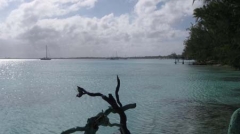
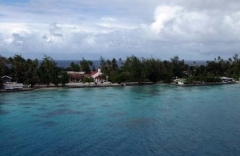
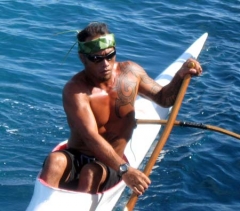
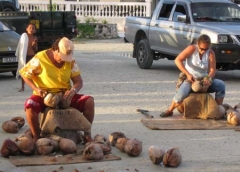
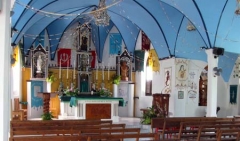
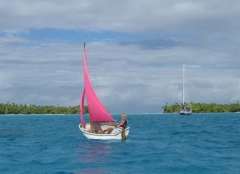
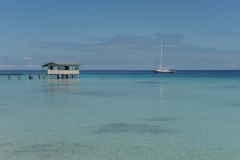
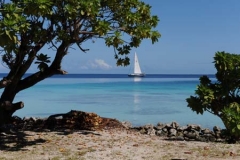
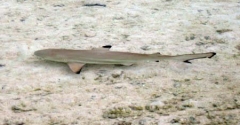
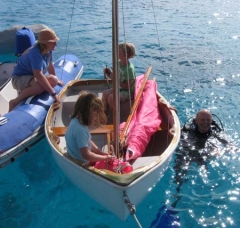
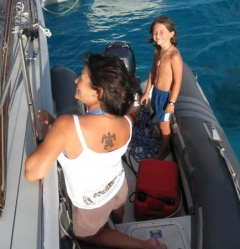
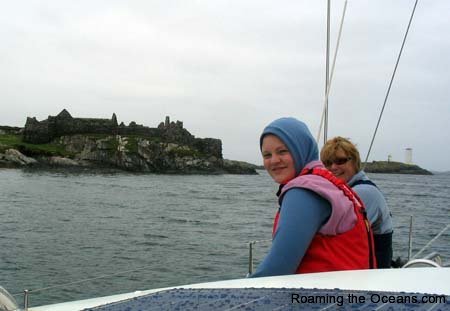
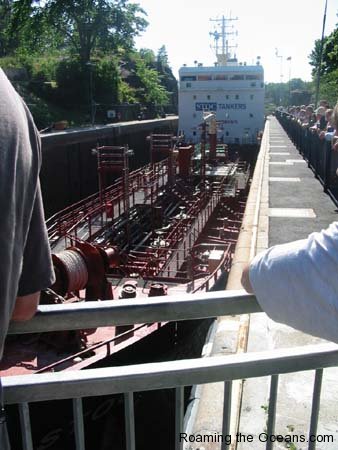
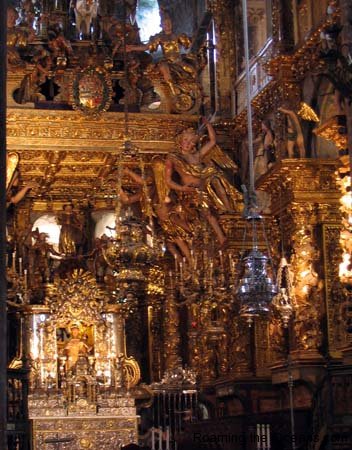
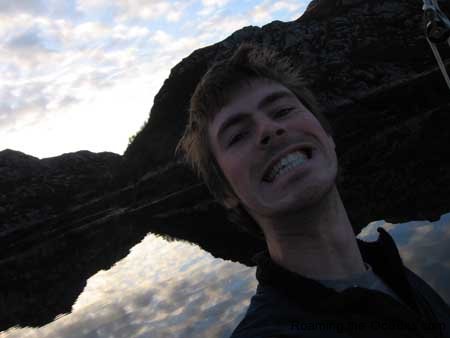


1 response so far ↓
1 Michael // Aug 25, 2009 at 9:47 am
Mary, David, What can I say, it is all sooooo painful…ly gorgeous, and I must be a real masochist checking the posts on a regular basis.
You must be completely intoxicated with the beauty and awe of the places you visit. …me: I am content with Ardbeg and dreams of west coast anchorages!!!!!!
My best wishes for an ever enjoyable and adventurous journey.
Pleased to hear Kirsty arrived well.. but wouldn’t count on her mucking in for a while… she is still too exhausted from that last race at Loch Lomond.!!!! Shhhhhhh!